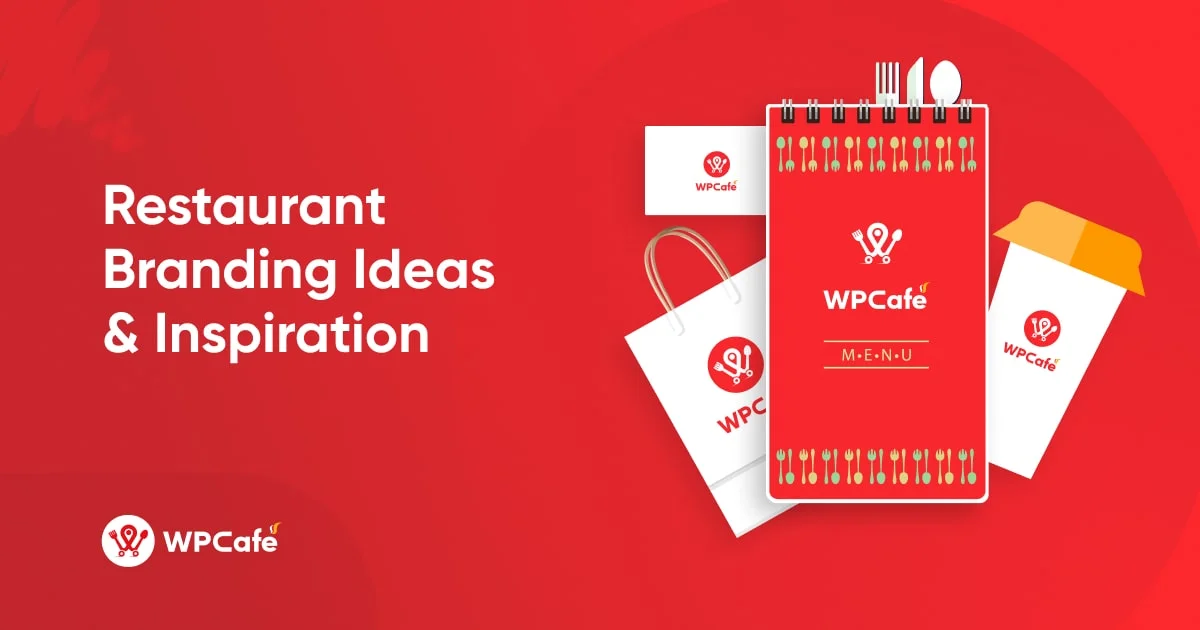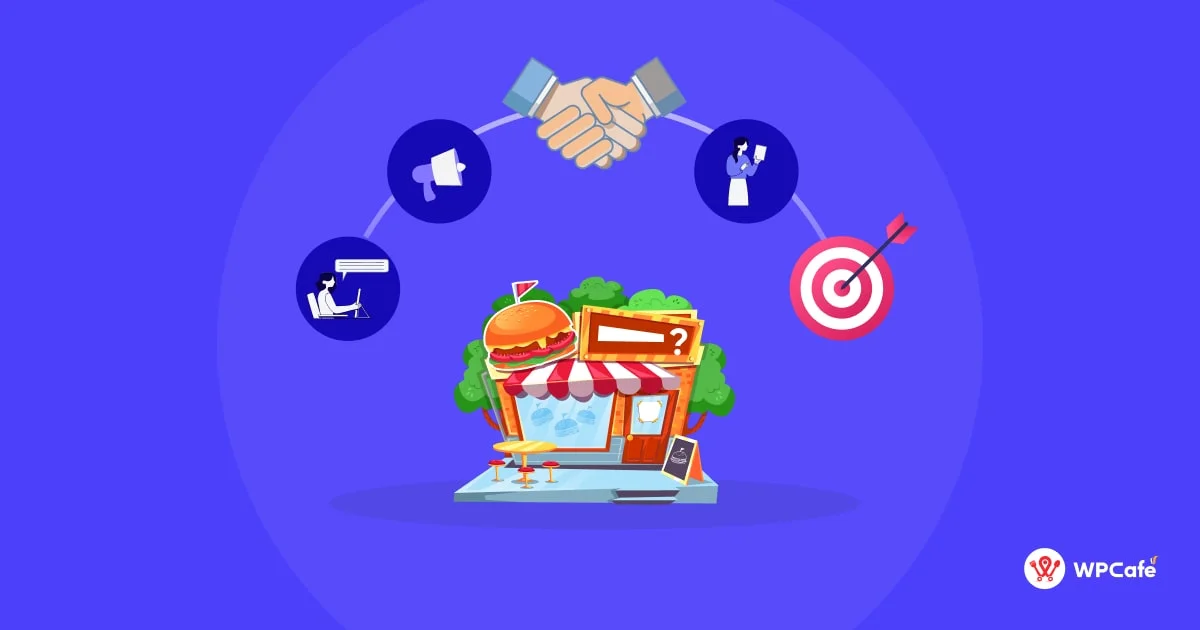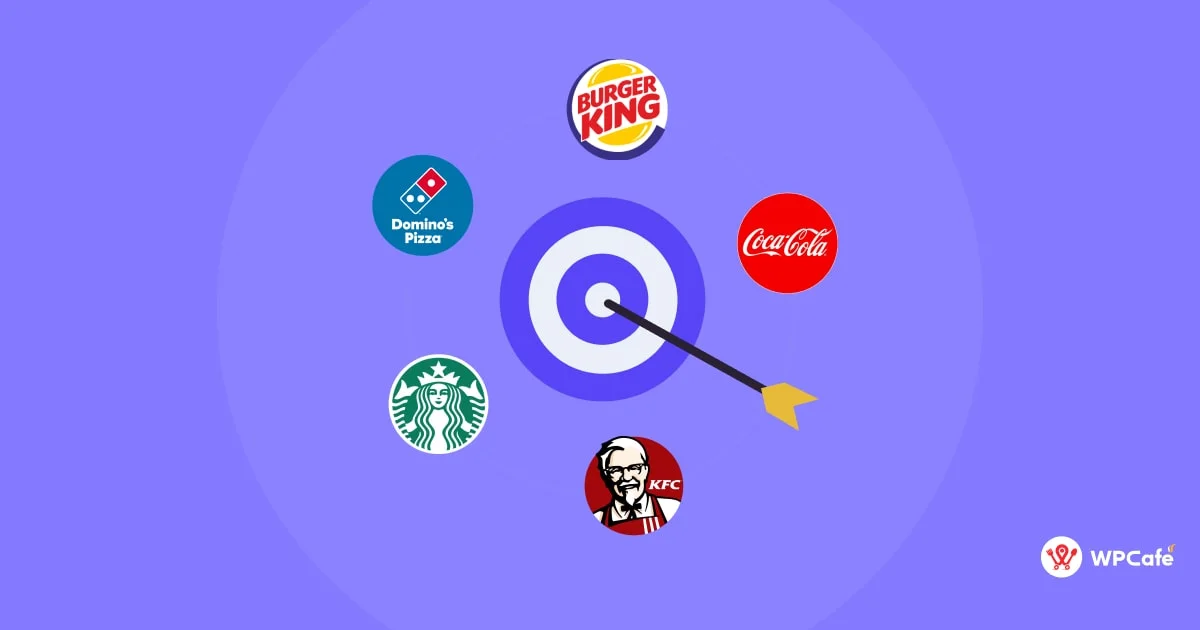Restaurant Brand Guide: Ideas and Inspiration

Table of Contents
You may have some great ideas for restaurants on your mind, or you may be looking for inspiration! And it is a well-known fact that the restaurant industry is highly competitive, be it in-store establishments or digital spaces.
Before investing in a restaurant you will need to understand the customer’s needs and market gap, also you need to develop an overall marketing strategy for your restaurant management.
Restaurant Industry Sales Forecast to Set $1.1 Trillion Record in 2024 – National Restaurant Association
Your branding for restaurants, like your food, needs to be attractive. I would like to remind you that the web presence of your restaurant is just as important as the quality of its service and food. While offline marketing can make an impact, online marketing can attract new customers and turn them into your restaurant’s sales.
What is Restaurant Branding?

Restaurant branding design refers to the identity, messaging, and overall experience that a restaurant offers. It helps to differentiate the restaurant from competitors and creates a unique identity for the business.
Strong restaurant branding design can attract and retain customers, build loyalty, and set the stage for a positive experience. It helps to communicate the restaurant’s personality and values to customers, influencing their perception and potential for repeat business. Additionally, effective restaurant branding has the potential to increase recognition and distinguish the restaurant in a crowded market, ultimately leading to greater success and profitability.
Here’s how a strong restaurant brand can help your business flourish:
✅ Builds emotional connection: A well-defined brand creates a feeling or association with your restaurant. This emotional connection can keep you top-of-mind for customers and encourage repeat visits.
✅ Cohesive and memorable: A strong brand ensures everything about your restaurant feels unified and consistent. This makes you more recognizable and memorable to diners.
✅ Attracts ideal customers: Your branding for restaurants should target your ideal customer. By highlighting what makes your restaurant unique, you’ll attract the people who are most likely to enjoy your food and atmosphere.
✅ Customer loyalty: A strong brand fosters trust and loyalty. When customers have a positive and consistent experience, they’re more likely to recommend your restaurant to others and keep coming back for more.

Popular Restaurant Branding Examples and Inspiration

Here’s a breakdown of how these brands leverage specific aspects of branding restaurant:
🍗 KFC – Special Signature Blend:
KFC’s secret weapon is their unique blend of herbs and spices. This blend is a closely guarded recipe, but it’s believed to include elements like paprika, garlic powder, onion powder, and other flavorful ingredients. This secrecy creates a mystique around the flavor and keeps customers coming back for more.
🍕 Domino’s – Pizza Delivery:
Domino’s has built its brand on the promise of fast and convenient pizza delivery. They’ve focused heavily on efficiency, offering online ordering, tracking systems, and delivery time guarantees. This focus on convenience has made them a go-to option for busy customers who crave pizza at home.
🥤 Coca-Cola – Marketing Communications:
Coca-Cola is a master of emotional branding. They’ve used powerful marketing campaigns for decades, associating their product with happiness, togetherness, and positive experiences. This emotional connection transcends the physical product, making Coca-Cola a desired and familiar brand.
🍔 Burger King – Cost Leadership and Differentiation:
Burger King positions itself as a value-conscious alternative to other fast-food chains. They offer competitive prices while still aiming to differentiate themselves through specific menu items like the Whopper sandwich. This strategy allows them to attract customers looking for affordability without sacrificing taste entirely.
☕ Starbucks – Premium Products and Uniquely Designed Stores:
Starbucks has cultivated a brand image of luxury and experience. They offer high-quality coffee drinks, comfortable seating, and a unique atmosphere in their stores. This focus on a premium experience justifies their higher prices and positions Starbucks as a place to relax and indulge, not just grab a quick cup of coffee.
These are just a few examples of how restaurants leverage branding strategies. By focusing on specific aspects like secret recipes, convenience, emotional connection, affordability, or premium experiences, restaurants can build a loyal customer base and stand out in a competitive market.
Best Restaurant Branding Ideas and Development

A strong restaurant brand identity can contribute to customer loyalty, recommending you to others, and long-term success in the competitive market. Brand identity also helps in forming an emotional connection with customers, conveying the restaurant’s values and personality, and creating consistent and cohesive visual and verbal communication.
As such, restaurant brand development is imperative for creating a memorable and appealing image for customers. Let’s explore some brand identities for a restaurant:
⭕ Defining Your Brand Identity

Defining your restaurant brand identity is about establishing who you are as a restaurant and how you want to be perceived by your customers. This foundational step is crucial because it informs all other aspects of your branding, from your visual style to your marketing strategies. Here are the detailed components of defining your brand identity:
- Concept Explanation: Brand identity is the collection of all elements that a company creates to portray the right image to its consumers. For a restaurant, this can include everything from your service style to the dining environment.
- Mission Statement: This is a concise description of what your restaurant does, who it serves, and why it exists. It should communicate the purpose of your restaurant to both customers and employees.
- Vision Statement: This outlines what you want your restaurant to achieve in the future, helping to guide strategic planning and inspire your team.
- Values: These are the core principles and beliefs that drive your business operations and decision-making processes. Values might include a commitment to quality, community involvement, or sustainability.
- Choosing a Personality: Your restaurant’s personality could be friendly, sophisticated, quirky, or any other trait that best represents your vision and target audience. This personality should be reflected in all interactions with customers, whether through marketing materials, social media, or face-to-face service.
- Tone of Communication: This refers to how the personality of your restaurant is communicated through words, phrases, and overall communication style. For instance, a family-friendly restaurant might adopt a warm and casual tone, while a high-end dining establishment may use a more formal and refined language style.
⭕ Visual Branding Essentials

Visual branding is about creating a cohesive look that supports your restaurant brand identity. This encompasses everything from your logo and color palette to the interior design of your restaurant. Effective restaurant branding design makes your restaurant instantly recognizable and enhances the overall customer experience.
- Logo Design: The logo is often the first visual encounter a potential customer has with your brand, making it a critical component of your visual identity. Ensure that your logo is simple, memorable, and scalable to work across various mediums. It should also be distinctive enough to stand out from competitors.
- Color Scheme: Colors play a significant role in conveying your brand’s personality and can evoke emotions that enhance customer experience. Select colors based on the emotions you want to evoke. For example, red is often used in restaurant logos because it is associated with appetite and excitement, while green might be used to signal health and sustainability.
- Typography: The type of fonts you choose can significantly impact how your brand’s personality is perceived. Choose fonts that are legible and reflect the character of your restaurant. Consistent use of fonts across all your branding materials helps reinforce brand recognition.
- Restaurant Decor and Ambience: The interior design of your restaurant should reflect and enhance your brand identity. This includes everything from the furniture and layout to the type of music played and the style of the menus. Your decor and ambience should aim to create a memorable dining experience that aligns with the expectations set by your brand identity.
⭕ Crafting Your Brand Message

Crafting your brand message involves defining the key messages you want to communicate to your customers. This message should resonate with your target audience and reflect your brand’s identity, values, and personality. Here’s a detailed breakdown of how to craft an effective brand message:
- Unique Selling Proposition (USP): Your USP is the distinct benefit that makes your restaurant different from and better than the competition. It’s what you offer that no one else does.
To define your USP, consider what you do that is unique, whether it’s a signature dish, an innovative service model, or a unique dining experience. This should be a clear and compelling reason why customers should choose your restaurant.
- Brand Storytelling: Brand storytelling involves creating a narrative around your restaurant that engages customers emotionally. This could be the story of how your restaurant was founded, the inspiration behind your cuisine, or stories about the people who work there.
Effective storytelling can make your brand more relatable and memorable. It can also build deeper emotional connections with your customers, making them more likely to return and recommend your restaurant to others.
- Consistency Across Channels: Ensure that your brand message is consistent across all marketing channels, including social media, your website, advertising, and even the physical design of your restaurant. Consistency helps reinforce your restaurant brand identity and makes your restaurant more recognizable. It also helps build trust and reliability with your customers.
⭕ Digital Branding Strategies

In today’s digital age, having a robust online presence is crucial for the success of any restaurant. Here’s how you can leverage digital branding strategies to enhance your restaurant’s online visibility and customer engagement:
- Website Design: Your restaurant’s website should serve as the central hub for your digital presence. It should be visually appealing, easy to navigate, and mobile-friendly.
Incorporate your menu, an online reservation system, contact information, and social media links. Also, consider adding a blog or articles that highlight news, events, and promotions.
- Social Media Presence: Select social media platforms that best match your target demographic. For instance, Instagram and Facebook are great for visual and community engagement, while Twitter can be effective for real-time updates and customer service.
Develop a content strategy that includes a mix of promotional posts, behind-the-scenes content, and interactive engagement, such as polls or live videos. - Online Reviews and Reputation Management: Regularly monitor reviews on platforms like Yelp, Google, and TripAdvisor. These reviews can significantly impact your restaurant’s reputation and customer decisions. Actively respond to both positive and negative reviews in a professional manner. This shows that you value customer feedback and are committed to improving the dining experience.
⭕ Marketing and Promotional Ideas

Once your restaurant is open, you need to spread the word and attract new customers. From eye-catching launch events to strategic partnerships, there are countless ways to amplify your brand and drive long-term growth.
- Launch Events: Make a splash with a grand opening celebration that introduces your restaurant to the local community. Think interactive cooking demos, live music, raffles, and festive decor that captures your brand’s essence. This is your chance to generate buzz, forge connections, and get diners excited about what you have to offer.
- Collaborations and Partnerships: Aligning your restaurant with complimentary local businesses can expand your reach and lend credibility to your brand. Consider joint promotions, cross-marketing, or event sponsorships that allow you to tap into new audiences. The right partnerships can position you as an integral part of the community.
- Loyalty Programs: Reward your most devoted customers and encourage repeat visits with a branded loyalty program. Offer incentives like points, exclusive experiences, or discounts that keep patrons coming back. This not only fosters brand loyalty but also provides valuable data to inform your marketing strategy.
Wrapping Up
Remember, a well-crafted restaurant brand has the power to attract and retain loyal customers, set you apart from your competition, and ultimately contribute to the long-term success of your business. So, take the time to brainstorm ideas, seek inspiration, and invest in building a powerful brand that will leave a lasting impression on your customers.
To stay up-to-date with all the restaurant hacks and ideas from our blogs, you can subscribe to our blog.🕵️

